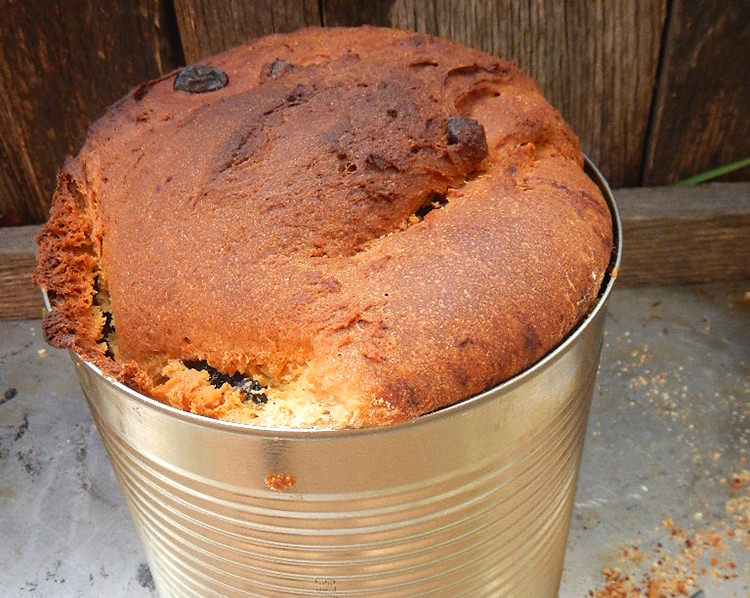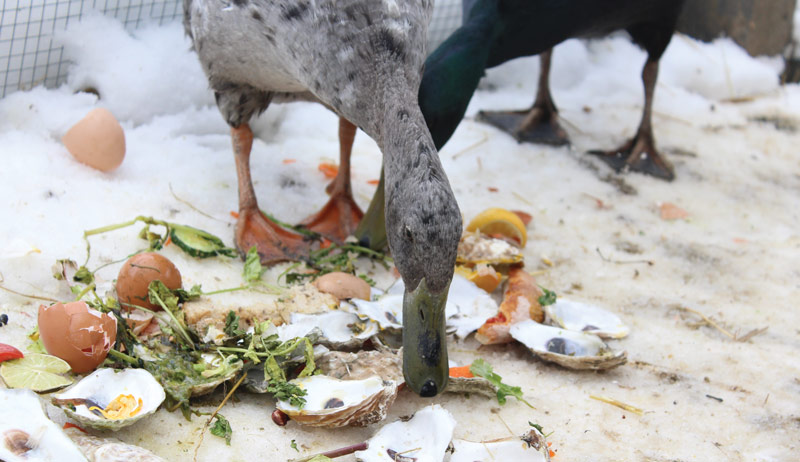Impacted crop is a common emergency that all chicken keepers should know how to identify and treat early. Secondary problems, such as sour crop, or even death can result when the condition is left untreated.
The crop helps chickens avoid spending all day out in the open foraging for food. Think of the crop as a “holding tank” for everything your chickens eat. Thanks to the crop, chickens can quickly gorge themselves on a great deal of food, and then go hide somewhere safe to digest it all over the next few hours. This, in turn, limits their exposure to potential predators. The problem with crops is that when a chicken eats too many things, she just can’t digest, and it gets blocked, or impacted.
What is the Crop?
The crop is a small muscle pouch located on the right side of the breast, in the center below the neck. The purpose of the crop is to hold food until it can be digested in the proventriculus (stomach) and gizzard. As the chicken eats, the crop grows larger, until it’s about the size of a golf ball or a bit larger. Once the crop is full, the chicken stops eating and usually goes somewhere safe to rest and digest her meal. It typically takes two to four hours for the crop to empty entirely.
When the digestive system is working as it should, a chicken’s crop will be very full and distended at the end of the day. She’ll digest her food overnight, and the crop will be completely empty and flat the next morning.

What Causes Impacted Crop
Chickens will eat a wide variety of things, especially if they’re allowed to free-range. However, we run into problems when they eat things they can’t digest!
Chickens that eat the following can develop an impaction.
- long, fibrous grass or hay
- string, rope or twist ties
- feathers
- bedding or litter (including wood chips, sand or shavings)
- plastic or metal trash
- hard, indigestible fruit skins (such as banana peels or avocado skins)
Chickens that are kept in a run and then suddenly allowed to free-range can also develop an impaction by suddenly gorging themselves on long grasses and other natural fibers in the yard.
So how do you know your chicken has an impacted crop? Look for the following symptoms.
- reduced appetite
- lethargy or depression
- weight loss
- hard, distended crop visible early in the morning
How to Find a Crop
To find a chicken’s crop, choose a bird that you know has eaten recently. You’ll have the most success finding the crop if you do it late in the day when it’s sure to be full of food.
Pick up your chicken with her tail toward you and her beak facing away from you. Hold her like you would a football, and use your hand to gently feel the center right side of her breast. The crop will feel like a firm or doughy ball.
It’s important to familiarize yourself with the location of the crop and its typical size and texture before you have to deal with an impaction.
How to Test For Impaction
The only sure way to know if your chicken has an impacted crop is to feel the crop first thing in the morning, before your chickens eat or drink anything.
A chicken’s crop is at varying stages of fullness throughout the day. However, the crop empties completely overnight, while the chicken sleeps. So, every healthy chicken should have a flat, empty crop when they come out of the coop first thing in the morning.
To test for impaction, go out to the coop first thing in the morning and feel your chicken’s crop. A chicken with a hard, full crop in the morning is suffering from an impaction.

(Photo by Heather Levin)
Treating Impacted Crop
There are several things you can do to treat mild to moderate cases of impacted crop. Mild impactions are when the crop is the size of a baseball or smaller.
1. Isolate & Withhold Food: One strategy to treat a mild case of impacted crop is to put the bird in isolation and withhold food for 24 to 48 hours. Make sure your chicken has access to plenty of fresh, clean water during this time. The more water you can get her to drink, the more it will help get matter moving through the crop. Her isolation cage or area should also be warm and stress-free.
2. Use Herbs: You can also give her a calming, cooled herbal tea in place of water to help her relax while she’s in isolation. Herbs such as chamomile, lemon balm, catnip and lavender all work well.
Chamomile is especially good to give impacted birds because it’s an excellent digestive aid and helps ease cramping and bloating. It’s also a mucilage, which might help get the items in the crop moving. Other mucilaginous herbs include marshmallow, fennel, and fenugreek. Given as a tea, these herbs might help get the fibrous material in the crop moving again. Adding turmeric to your chicken’s water while she’s going through treatment can help prevent sour crop, a secondary condition that often piggybacks on an impaction. Sour crop is caused when the contents of the crop start to ferment, and an overgrowth of Candida yeast develops. Numerous studies, including“Anti-Candida Activity of Curcumin: A Systematic Review ” (bit.ly/3PzWUTs) in Current Drug Discovery Technologies (Vol. 18, No. 3, 2021), have found that turmeric is an effective natural treatment for Candida overgrowths.
3. Massage the Crop: If your chicken still has an impacted crop after 24 to 48 hours of isolation and fasting, try massaging the crop.
To do this you’ll need a syringe or eye dropper, olive or vegetable oil, and lukewarm water. First, mix 1 tablespoon of oil with ¼ cup of lukewarm water and mix. Quickly fill the syringe or dropper with up to 10 milliliters of the oil and water mixture, and slowly dribble it into your chicken’s beak. This might be a two-person job, as you’ll have to hold the bird and open her beak by hand to do this.
If your chicken starts coughing, stop immediately and give her a minute to rest and catch her breath. Once you’ve gotten the oil and water mixture down the esophagus, gently massage the crop from top to bottom for three minutes.
Do this entire process several times throughout the day.
4. Try Epsom Salt: You can also try to flush the chicken’s crop with Epsom salt. If you try this treatment, use the recipe developed by Gail Damerow in The Chicken Health Handbook.
Mix 1 teaspoon of Epsom salt with ½ cup of water, and dribble into the chicken’s mouth twice daily for up to three days.
5. Transition to Soft Food: Once you notice your chicken’s crop is smaller or softer, reintroduce foods slowly. Opt for soft, easy-to-digest foods such as scrambled or hard-boiled eggs, yogurt, fermented feed or soft, cooked vegetables.
Once you notice that the crop is emptying out completely every night, you can reintroduce her back to the flock.
If the impaction has not cleared up after several days of treatment, your next option is to take the chicken to a poultry vet to clear the crop manually or surgically remove the items impacting the crop. These procedures should be done by a licensed vet, as it’s very easy to injure or kill your chicken attempting either of them at home.
Although impaction is a serious condition, regular crop checks and paying attention to your chickens’ behavior can help you spot it early and take action while it can still be treated.
This article about impacted crop was written for the January/February 2024 issue of Hobby Farms magazine. Click here to subscribe.




























